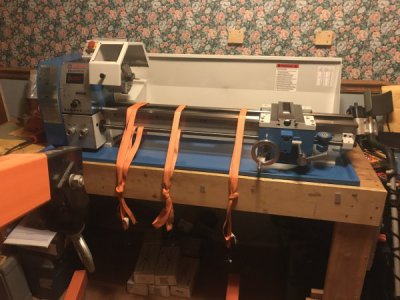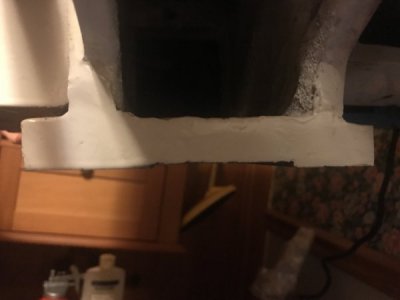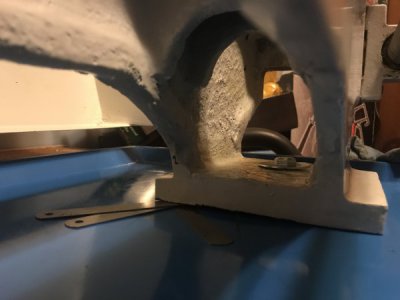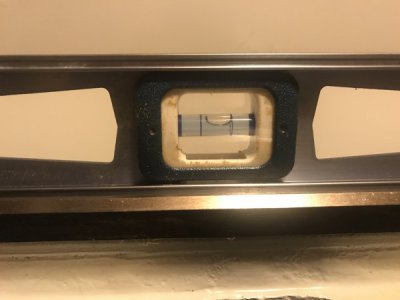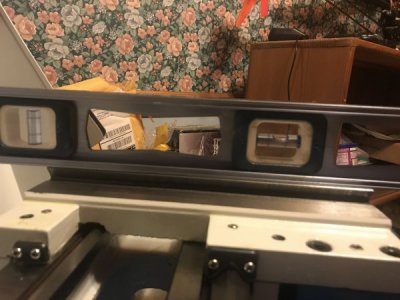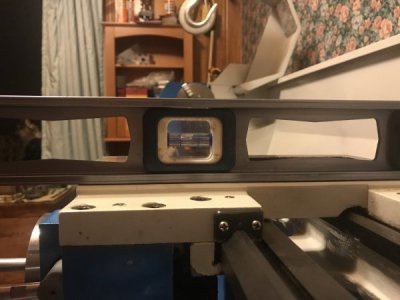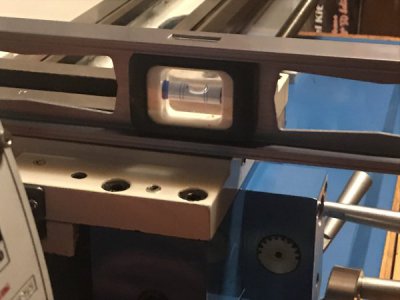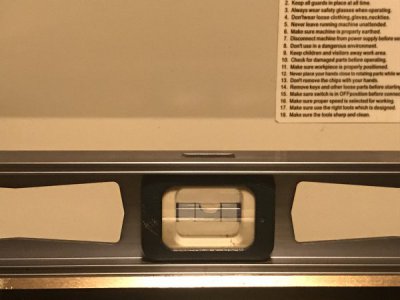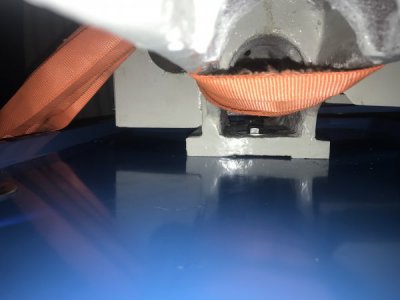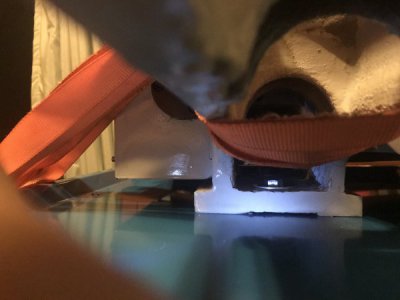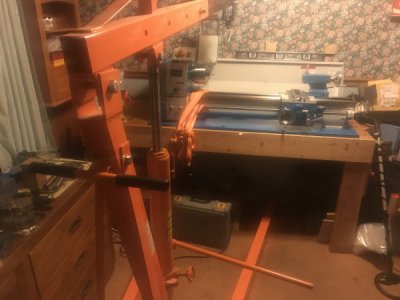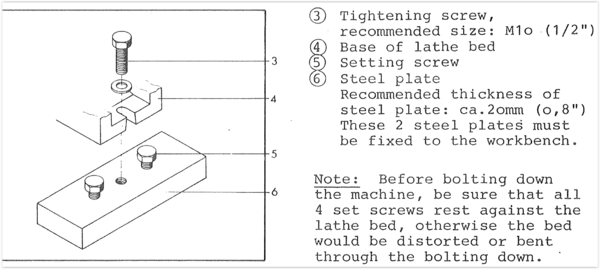- Joined
- Apr 17, 2015
- Messages
- 323
Ok, lets get you lined out on some things first. On your lathe; it should be bolted to a sturdy bench and then level the bench; I'd be more concerned about twisting the bed doing it the way you are now. The other issue with not having it down tight against the chip pan is the pan will leak. Your lathe looks like a PM from Quality Machine Tools. There stuff is pretty decent, most of the smaller lathes are pretty rigid and are made to be bolted to a bench or an optional stand. If you need some help with design on a stand I'd be happy to help. Do you have access to welding?
Ok now as far as tools go; I think your confusing some tool names dial calipers are for measuring inside and outside dimensions vs. dial indicators/test indicators which measure but more for set up.
Kind of a standard starting set would be 0-1" micrometer, 6" scale with 1/8 & 1/16 divisions on one side and 1/32 & 1/64" on the other. 6" dial caliper (will get you larger sizes and the ability to measure ID and depth) Simple dial indicator set like Starrett model 196. I'd also add a 12" combination square and scriber as you will need these for layout and many other tasks. I'm assuming you have things like a ball pein hammer and center punch just keep adding tools as you need and can afford them. You can see YouTube videos by OxTool and Tubelcain for what other tools to add, but these items will get you going.
You indicated your on a budget so Id check for the items you need on EBay, I looked earlier today and there, as usual, are some good deals to be had.
Ok now as far as tools go; I think your confusing some tool names dial calipers are for measuring inside and outside dimensions vs. dial indicators/test indicators which measure but more for set up.
Kind of a standard starting set would be 0-1" micrometer, 6" scale with 1/8 & 1/16 divisions on one side and 1/32 & 1/64" on the other. 6" dial caliper (will get you larger sizes and the ability to measure ID and depth) Simple dial indicator set like Starrett model 196. I'd also add a 12" combination square and scriber as you will need these for layout and many other tasks. I'm assuming you have things like a ball pein hammer and center punch just keep adding tools as you need and can afford them. You can see YouTube videos by OxTool and Tubelcain for what other tools to add, but these items will get you going.
You indicated your on a budget so Id check for the items you need on EBay, I looked earlier today and there, as usual, are some good deals to be had.

